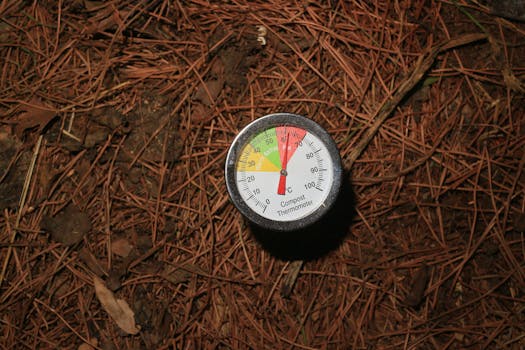Anúncios
As the agricultural sector faces intense challenges, embracing technology has become essential for enhancing productivity and sustainability. The integration of modern techniques reshapes farming practices, supporting the needs of a growing global population.
In the United States, agriculture plays a vital role in the economy and food security. With technological advancements, farmers can manage their resources more effectively and optimize yields. This evolution not only benefits farmers but also consumers looking for reliable food sources.
This article explores the multifaceted role of technology in agriculture, examining its impact on efficiency, sustainability, and future prospects for the industry. Embracing these innovations can support a robust agricultural framework.
Precision Agriculture: A Game Changer
Precision agriculture harnesses technology and data analytics to improve crop yields significantly. By utilizing GPS, sensors, and mapping technologies, farmers can target specific areas for treatment.
For instance, soil health can be monitored in real-time, allowing for the precise application of fertilizers and pesticides. This ensures that resources are used efficiently, reducing waste and cutting costs.
Anúncios
Moreover, precision agriculture helps in irrigation management, enabling farmers to apply water only where needed. This targeted approach conserves water, which is crucial in drought-prone areas.
As a result, the adoption of precision agriculture contributes to a more sustainable farming model. It minimizes environmental impacts and enhances food security by optimizing production.
In the long run, these technologies empower farmers to make informed decisions that improve efficiency and boost profitability. The insights gained from data analytics pave the way for innovation in farming.
Anúncios
Automation and Robotics in Farming
Automation and robotics are revolutionizing various agricultural processes. From planting to harvesting, machines can perform tasks more quickly and accurately than human labor.
Today, farmers use automated machinery to sow seeds, monitor crop health, and pick fruits. These advancements reduce labor costs and address the challenge of labor shortages in agriculture.
Additionally, autonomous vehicles equipped with sensors can navigate fields, avoiding obstacles and completing tasks with minimal supervision. This increases productivity while maintaining high standards of quality.
Moreover, robotics can enhance soil preparation and pest management. Drones and robotic arms enable precise intervention, resulting in healthier crops and reduced reliance on chemical inputs.
As automation continues to evolve, the agricultural landscape is expected to change drastically. Farmers who embrace these technologies can gain a significant competitive advantage in the market.
Data Analytics and Decision Making
The use of data analytics is becoming increasingly vital for effective decision-making in agriculture. By analyzing vast amounts of data, farmers can identify trends and optimize processes.
Farmers can utilize historical weather patterns, soil conditions, and market trends to make informed decisions on what crops to plant and when to harvest. This data-driven approach mitigates risks associated with farming.
Moreover, farm management software systems provide insights into resource allocations, inventory levels, and equipment efficiency. These insights enable better planning and execution of farming operations.
With real-time access to these analytics, farmers can adapt their strategies promptly, enhancing resilience against changing market demands. The effective use of data can lead to increased profitability and sustainability.
Consequently, data analytics empowers farmers to take proactive steps, ensuring that they remain competitive in a rapidly changing agricultural landscape.
Climate Resilience and Sustainable Practices
Technological advancements help farmers implement climate-resilient practices, pushing agriculture toward sustainability. Technologies develop innovative solutions that address the impacts of climate change on crop production.
For instance, climate modeling tools provide forecasts that guide farmers in selecting crop varieties best suited to changing conditions. This adaptability is crucial as extreme weather events become more common.
Pest and disease management technologies also play a vital role in sustainability. By predicting pest behavior and outbreaks, farmers can take preemptive measures to protect their crops.
Additionally, advancements in biotechnology enable the development of drought-resistant crops. These crops require less water and are more resilient to extreme temperature variations, ensuring food production remains stable.
In summary, technology fosters the adoption of sustainable practices in agriculture, allowing farmers to thrive while protecting natural resources and the environment.
The Role of IoT in Farming
The Internet of Things (IoT) has opened new frontiers for innovation in agriculture. Connected devices gather real-time data, helping farmers make informed decisions regarding their operations.
IoT sensors can monitor soil moisture levels, temperature, and nutrient content automatically. This information allows farmers to tailor irrigation and fertilization efforts precisely according to plant needs.
Furthermore, IoT devices facilitate efficient supply chains. They track inventory levels and help farmers manage distributions, ensuring that produce reaches markets before spoilage occurs.
As data from IoT devices accumulates, farmers can analyze this information to optimize resource usage, enhance productivity, and reduce costs. This connected approach drives efficiency and innovation within the industry.
Ultimately, IoT technology paves the way for smarter farming practices, building a more responsive agricultural system that can adapt to challenges in real-time.
Biotechnology and Crop Improvement
Biotechnology plays an increasingly significant role in enhancing crop resilience and productivity. Through genetic engineering, farmers can develop crops that withstand pests, diseases, and climate fluctuations.
Crops derived from biotechnology require fewer inputs, including fertilizers and pesticides, translating to lower costs and reduced environmental impacts. This efficiency supports sustainable farming practices.
Moreover, advancements like CRISPR technology enable precise edits to crop DNA, improving traits without introducing foreign genes. This innovation accelerates the breeding process, yielding faster results.
In addition, biotechnology contributes to the development of new varieties with improved nutritional profiles. These enhancements help address malnutrition and contribute to global food security.
As farmers worldwide seek solutions to pressing agricultural challenges, biotechnology emerges as a promising tool for boosting yields sustainably and efficiently.
Conclusion
In conclusion, technology is fundamentally transforming the agricultural landscape in the United States and beyond. From precision agriculture and automation to data analytics and biotechnology, the innovations are vital for optimal farming practices.
By incorporating these advancements, farmers can optimize production, improve efficiency, and ensure sustainability. As the challenges of agriculture evolve, technology will play a critical role in shaping the future of food production.
As we move forward, embracing technology in agriculture is not just beneficial—it is essential for ensuring food security and environmental sustainability. The future of farming is bright, supported by a commitment to innovation.



